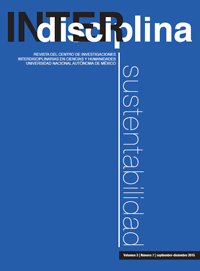Remote Sensing of Sustainable Rural-Urban Land Use in Mexico City: A Qualitative Analysis for Reliability and Validity
Contenido principal del artículo
Resumen
Abstract | Mexico City is one of the largest cities on the globe and a site where important transformations of nature reserves into urban areas have been taking place. This paper compared the southern part of Mexico City based on free images available (Landsat – 30m) and high-resolution imagery (RapidEye – 5m) from an explorative qualitative perspective in the logic of reliability and validity. We argue that the resolution of the free imagery available for the assessment of urban development on the structural level of land use is not sufficient to identify the development of specific parts of the city. Despite the fact that the general pattern of changes in land use is observable, changes within the urban structure are difficult to see with a resolution of 30 meters per pixel in the Landsat images. For validity, this analysis is merely graphic, and it shows a promising matching of urban development with environmental and land complaints, nevertheless, a numerical analysis is needed in the future.
Descargas
Detalles del artículo
Citas en Dimensions Service

Esta obra está bajo una Licencia Creative Commons Atribución-NoComercial-SinDerivar 4.0 Internacional.





